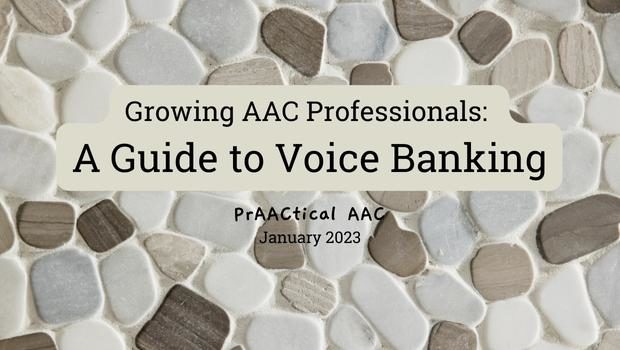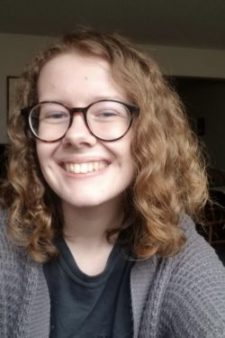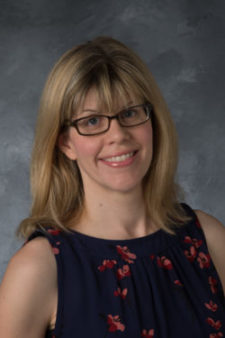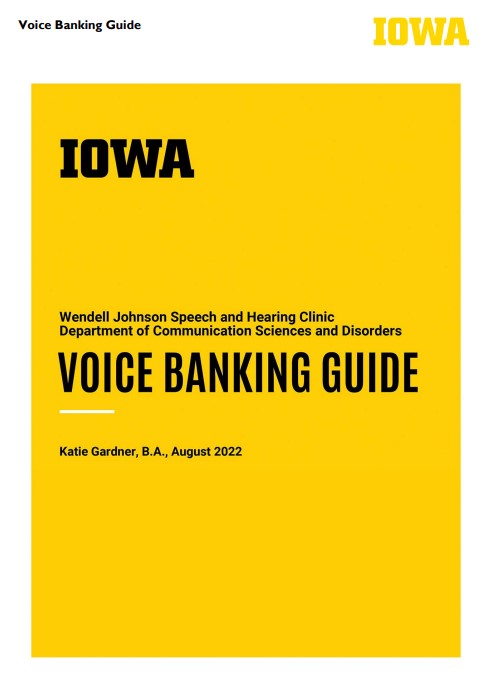Growing AAC Professionals: A Guide to Voice Banking

When university faculty and graduate students work together on AAC content, good things are bound to happen. In this post, we hear from Clinical Associate Professor and SLP Krista Davidson, a strong advocate for AAC, and Katie Gardner, a graduate student in the Communication Sciences and Disorders program at the University of Iowa. They collaborated on the development of a guide to voice banking and are now making it available to all.

 ::::::::::::::::::::::::::::::::::::::::::::::::::::::::::::::::::::::::::::::::::::::::::::::::
::::::::::::::::::::::::::::::::::::::::::::::::::::::::::::::::::::::::::::::::::::::::::::::::
I have a student project I’m thrilled to share with a larger audience! One of our second-year graduate students, Katie Gardner, created a thorough and detailed guide to voice and message banking. Although the developers of voice banking programs make every effort to design user-friendly software, the whole process can still be quite daunting to some clients and families. From the services to the devices, to the cost, setup, and recordings, there are many considerations that can become overwhelming and discourage a person from voice banking. A little guidance and support can go a long way in making a difference that will benefit an individual for years to come. Katie’s comprehensive guide could stand alone as a way to aid in this process. However, it also presents another opportunity for student learning. I believe our graduate clinicians implementing the guide together with clients supplies the students with valuable hands-on experience while also helping clients take the first steps in preserving their unique voice. Below, Katie explains more about the construction of the guide.
When I was considering a project for my independent study, I wasn’t sure which direction to go. My supervisor, Krista Davidson, gave me several ideas, but only one truly caught my interest. An SLP at the local hospital had contacted her about offering assistance with voice banking for patients with ALS, something that hadn’t been done at our clinic before. Krista proposed creating a guide to make it possible for future student clinicians to offer this service to clients. I am a passionate resource collector, and I knew I wanted to do something genuinely impactful, so it was immediately obvious this was the project for me.
To start, I made a comparison table to provide information on what voice banking services were available and what each had to offer. This allowed those interested in voice banking to see the different features and options offered by each service, helping them to determine which might be the most suitable for their specific needs and goals. The comparison table was an important starting point for our project, as it gave clients a concrete summary of the differences between the many available services.
As the project progressed, I decided to split the comparison table in two for ease of use: one table comparing the features of the different services, and one showing compatibility with different AAC devices and programs. Additionally, I started writing a how-to guide for future student clinicians working with voice banking clients in our clinic.
Once I had gathered and organized all the necessary information, we were able to finalize the project. The final draft of the manual included the comparison table and device compatibility table, as well as information about message banking, “double dipping” (using the same recorded words or phrases for multiple purposes), and funding options. I also included a step-by-step guide to voice banking using each of the services we had featured, as well as extra resources for those who wanted to read further on the topic. The manual was designed to be used by both clinicians working with voice banking clients and individuals who wanted to voice bank on their own, basically a comprehensive resource for anyone wanting to learn more about voice banking.
Finally, we put the project’s results to the test with our first two voice banking clients. Through these experiences, we learned a lot about the practicalities of implementing this process. Then, the final step of the project was creating brief guides to setting up the H1n microphone given to us by the ALS Foundation of Iowa and a clinician’s guide to planning the initial session with a client, to ensure future clinicians felt fully prepared when seeing their first voice banking client.
I hope the information and resources we compiled will be helpful for both SLPs and individuals interested in voice banking at home. I learned a great deal about this area of the field throughout this project and am excited to see how it progresses in the future.
A folder with the manual and other guides can be accessed here 0r by clicking on the image below.

About the Guest Authors
Katie Gardner is a second-year graduate clinician and MA student in the Department of Communication Sciences and Disorders at The University of Iowa. She can be reached at kathryn-gardner@uiowa.edu.
Krista Davidson is a clinical associate professor in the Department of Communication Sciences and Disorders at The University of Iowa. She can be reached at krista-davidson@uiowa.edu.
Filed under: Featured Posts, PrAACtical Thinking
This post was written by Carole Zangari

1 Comment
Amazing resource and will be very useful for us to share as information. Thanks for all the hard work in compiling this guide.